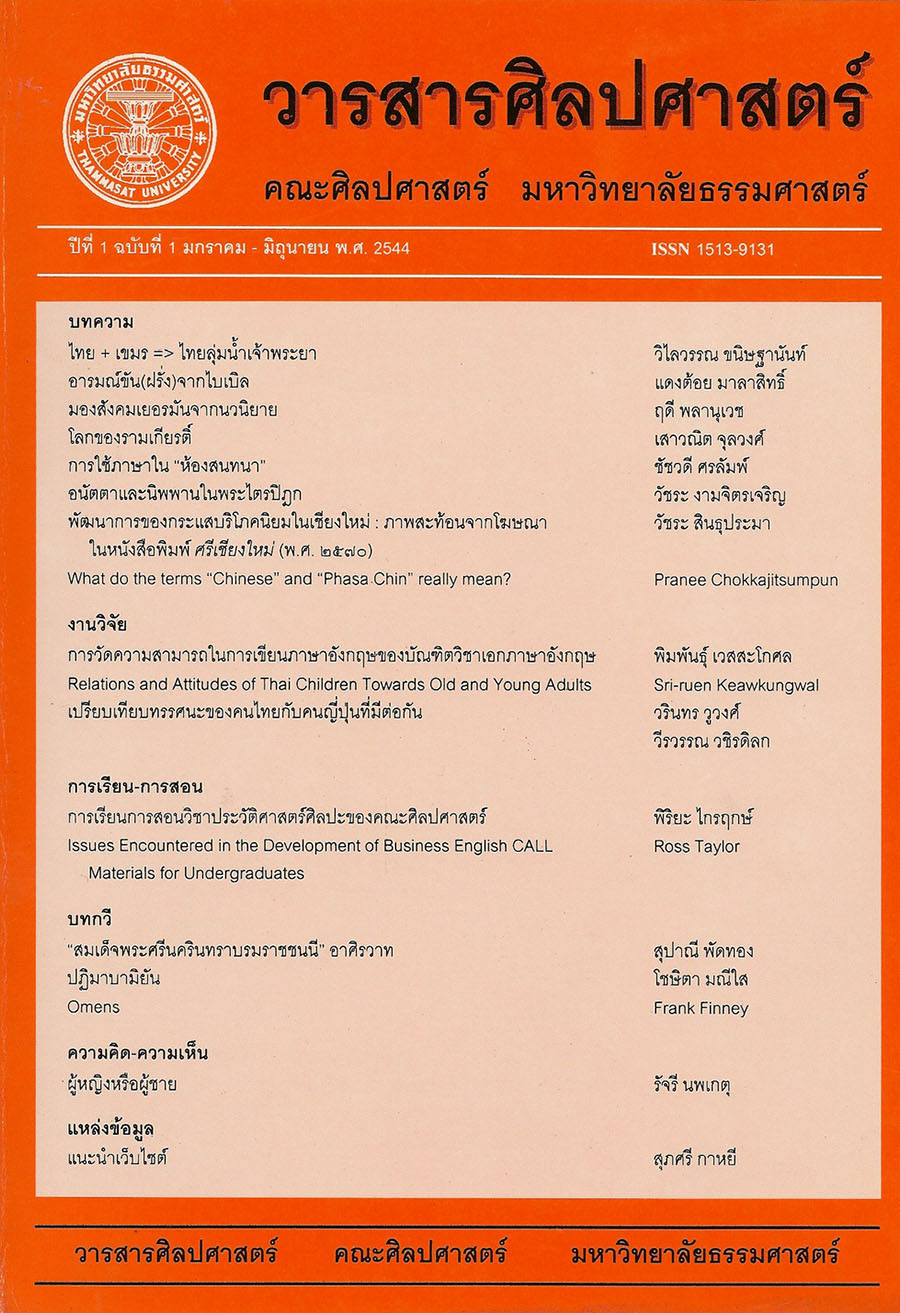ไทย+เขมร ไทยลุ่มน้ำเจ้าพระยา
Main Article Content
บทคัดย่อ
บทความนี้เสนอสมมติฐานเกี่ยวกับภาษาในสังคมไทยสมัยกรุงศรีอยุธยา 2 ประการ คือ
1. สังคมไทยสมัยอยุธยาเป็นสังคมทวิภาษา (bilingual) คนในสังคมใช้ทั้งภาษาไทยและภาษาเขมรในชีวิตประจำวัน มีปรากฏการณ์ทางภาษาที่แสดงว่ากรุงศรีอยุธยาเป็นสังคมทวิภาษา คือ ก) มีการปนลักษณะภาษาเขมรและภาษาไทย (code-mixing) ข) มีคำศัพท์ภาษาเขมรในภาษาไทยเป็นปริมาณมากมาย มากกว่าคำมรดกไทดั้งเดิม (connate) และคำเหล่านี้มีขอบเขตความหมายที่ครอบคลุมทั้งภาษา ผู้เขียนเสนอว่า คำเขมรเหล่านี้ไม่ได้เข้าสู่ภาษาไทยโดยการยืมแต่เกิดจากการถ่ายเทลักษณะภาษา (language transference) เขมรสู่ภาษาไทย โดยชี้ให้เห็นว่าคำเขมรในภาษาไทยมีคุณลักษณะที่แตกต่างจากคำยืมภาษาอื่นๆ ในภาษาไทยอย่างสำคัญ 6 ประการ
2. ภาษาไทยสมัยกรุงศรีอยุธยา ซึ่งเป็นมรดกตกทอดมาถึงสมัยรัตนโกสินทร์เป็นภาษาลูกผสมระหว่างภาษาไทยกับเขมร ด้วยเหตุนี้่ภาษาไทยลุ่มน้ำเจ้าพระยาจึงมีลักษณะที่แตกต่างจากภาษาไทอื่นๆ ในตระกูลไทด้วยกัน การผสมภาษานี้ส่วนหนึ่งเกิดจากการย้ายภาษา (language shift) คนที่เคยใช้ภาษาเขมรในชีวิตประจำวันได้หันมาใช้ภาษาไทยแทน
Thai article proposes two hypotheses about the Thai language of the Ayuthaya Period.
1. Ayuthaya was a bilingual society to a significant extent. Its people were using Thai and Khmer in their daily life. Two major language phenomena point to bilingualism in this period. They are code-mixing and an abundance of Khmer words in Thai. There were more Khmer words in use than Thai cognates. The Khmer words permeated in all aspects of Thai. Six reasons are given to demonstrate that not all Khmer words were loanwords; rather, they were transferred from Khmer into Thai by bilingual speakers.
2. The Thai of Ayuthaya, inherited by the Thais of the Bangkok Period, was a mixture of Khmer and Thai. Consequently, this from of Thai is very different from other sister languages of the Tai Family. The mixture partly resulted from language shift by the Khmer descendants of Khmer speakers of Ayuthaya.


